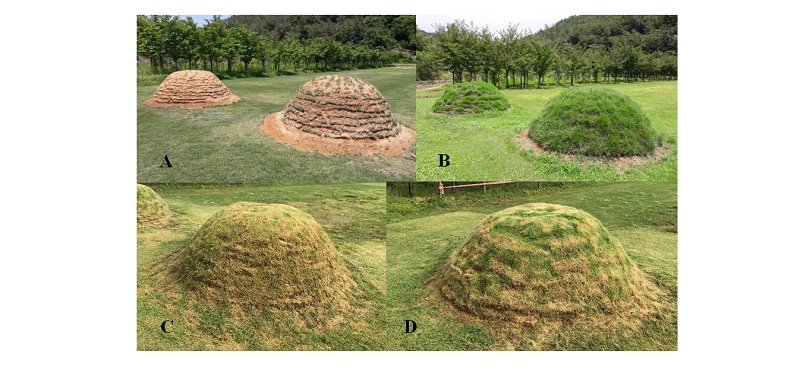Abstract
Figures & Tables

Fig. 1. Grave mounds covered with and sods. Immediately taken after strip-sodding (A), in August (B), after Thanksgiving day’ mowing (Beolcho) (C and D) at Hapcheon.
Seog-Won Chang1,* Chang-Hyun Sung2 Eun-Ji Bae2 Jun-Hak Koo3 Jeong-Ho Yun3
1Subtropical Horticulture Research Institute, Jeju National University, Jeju 63243, Korea
2Subtropical Horticulture Research Institute, Jeju National University, Jeju 63243, Korea
3Department of Agricultural Biotechnology, Rural Development Administration, Jeonju 54875, Korea

Fig. 1. Grave mounds covered with and sods. Immediately taken after strip-sodding (A), in August (B), after Thanksgiving day’ mowing (Beolcho) (C and D) at Hapcheon.